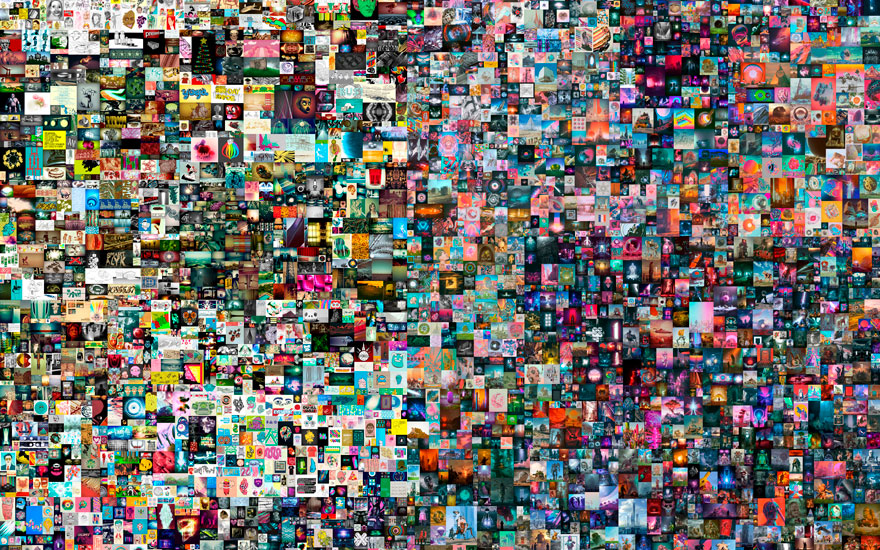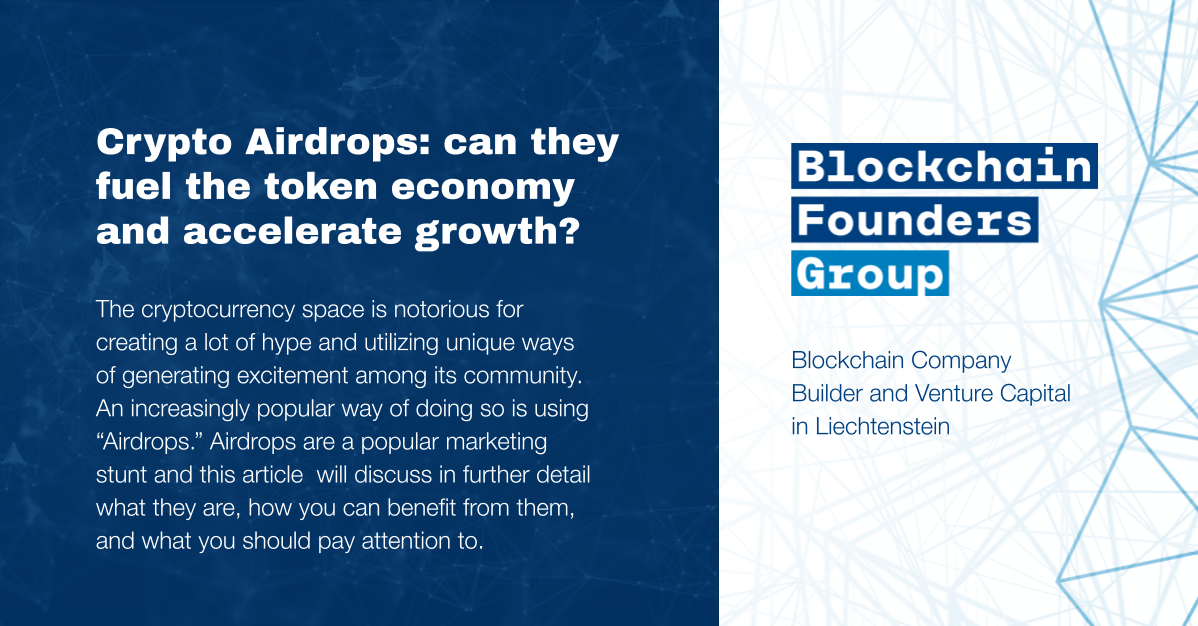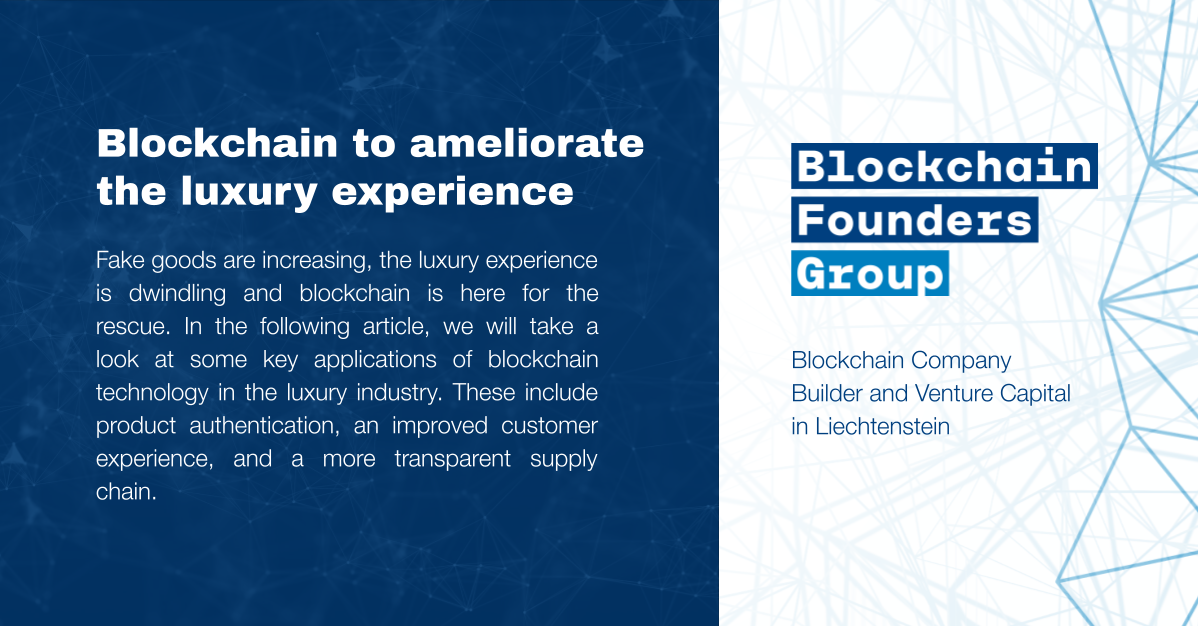The NFT wave; digital art through blockchain technology?
Would you pay nearly $70 million for a digital piece of art that you could also obtain by right clicking it and hitting download? NFT art has taken the art market by storm with seemingly exponential growth and unfathomable prices for digital works of art. Whether this form of art is sustainable remains to be seen. However, two things are certain: 1) It seemingly is altering the course of the art market and writing art history. 2) The underlying technology - blockchain technology and tokenization - have a multitude of useful applications outside of just digital art pieces. To understand all this, we should start by covering NFTs.
Author - JP Patheja Hellmich
What is an NFT?
NFT stands for Non-fungible Token. ‘Fungible’ is a word used in economic lingo to signify the interchangeability of a good or asset¹. The best example of a fungible item is money. If you lend a friend $50 and they repay you with two $20 bills and one $10 — or just a different $50 bill — you would be satisfied. Conversely, if you lend them your motorcycle or perhaps a watch and they return a different one, even if it is of the same make and model, you would not accept it since these goods are non-fungible. They have unique characteristics which give them their value, be it monetary or sentimental.
Now that we have covered fungibility — a non-fungible token is a token that allows us to digitally represent ownership of goods². We can tokenize many things from collectibles such as art, music to videos, GIFs and even cars or real-estate.
The record of ownership is secured on the blockchain. Essentially the same underlying technology behind cryptocurrencies. This is an immutable record which implies that the NFT can not be duplicated, illegitimately transferred to a new owner or altered in any way other than by the owner themselves.
How is this relevant for the art market?
Recently, NFT art has taken the art market by storm. A precise definition of NFT art would require the answer to the philosophical question of what art is - and what it isn’t - which is beyond the scope of present analysis. For simplicity, we can view NFT art as digital media like an image, video or GIF.
There are several NFT art platforms such as Opensea which is open to all artists, or curated platforms such as SuperRare. I highly recommend taking a look at the latter to better grasp the concept of NFT art.

Mike Winkelmann, who goes by Beeple, sold an NFT titled ‘The First 5000 Days’ for a staggering $69 Million at an online auction through Christie’s. Beeple started creating one digital image a day in 2007, to ultimately combine them into one large collage with a broad spectrum of themes. This NFT sale wrote history for the art market as this was the first NFT ever to be auctioned off at Christie’s³ — and for that matter at any of the reputable auction houses.
Sotheby’s also collaborated with digital artist Pak to auction off a collection of NFT’s for $16 million⁴. Although it did not rake in nearly the same amount as Beeple, the trend is apparent: NFT’s are being recognised by the art community — at least on the commercial side.
But why are people shelling out absurd amounts of money for a digital file that anyone can look at in the same manner without having to make the purchase?
Why purchase NFT art?
It depends on who you ask. Vignesh Sundaresan, the owner of the first 5000 days and co-founder of bitaccess — a company specialised in setting up Bitcoin ATMs — says he would have paid even more for the piece⁵. The motivation being, to largely influence and participate in the changing of the perception of art and its history.
It is not my position to judge this decision, however, it is undeniable that the hefty price he paid drew quite a bit attention to the NFT art market — and as they say, no publicity is bad publicity.
There are also individuals intrigued solely by the art itself and want to support the artists, the overall trend, and perhaps also be able to have the bragging rights of ownership to a digital piece.
Arguably this brings us to our third motivation: money. With the large influx of new pieces, as well as the demand for them, speculators see an opportunity. The market grew by 800% in the first four months of 2021, need I say more?
So apart from eye-watering prices for downloadable images, does this technology have any other applications?
Art tokenization
So far we have predominantly covered intangible art, however, physical art can be tokenized as well. First, the value of the painting or sculpture will be determined. Second, tokens will be issued to digitize the value of the painting. Third, buyers can then purchase tokens of the painting.
There is an interesting proposition in this case: the value of a painting can be divided into tokens in a way where each token represents fractional ownership of a painting. In other words, it is the democratization of art.
Furthermore, through tokenization, the liquidity of art works and perhaps ultimately the art industry will be improved. In turn — and taking into account that art can now be partially owned without the extremely high capital requirements — the art industry will become more attractive for both institutional and retail investors.
Additionally, there is an added benefit of tokenizing art: thanks to blockchain technology, it is significantly easier to track the ownership history of an item and its certification. This will make for a more transparent market where counterfeit works will be harder to sell and authentication will be next to effortless.
Tokenization is not limited to art though, other collectibles such as watches, wine or cars can be tokenized; also intellectual property rights or even real estate!
Final remarks
While the NFT market is going ballistic, whether or not the demand is a sustainable one — or just a bubble, remains to be seen. Nevertheless, it does seem to have the potential to permanently and significantly alter the course of art history and the art market.
Whether this trend of digital art is congruent with our conception, liking and expectations for — and of art, is a topic for another day. The answer to that is highly subjective, albeit very interesting.
Beyond the art market, the underlying technology carries relevance for the remainder of the luxury industry as well as many other industries. If these concepts, especially tokenization, are of interest, follow us at Blockchain Founders Group for more!

About Blockchain Founders Group
Blockchain Founders Group (BFG) is the driving force behind web3 innovation. As a company builder, we bring together a team of blockchain visionaries, experienced entrepreneurs, and industry experts, all committed to nurturing emerging talent. Our BFG acceleration programs serve as your springboard for launching blockchain startups, transforming concepts into reality in just 2-3 months. Each cohort develops 5-8 unique web3 ideas, and selected projects will be financially supported with 70,000 - 100,000 EUR, along with access to our extensive network. Join us in shaping the future of web3!
Stay updated by connecting with us on LinkedIn, Medium, Twitter, and YouTube.
References
- https://ethereum.org/en/nft/
- https://www.hec.edu/en/knowledge/instants/will-nfts-disrupt-art-market
- https://www.christies.com/features/Monumental-collage-by-Beeple-is-first-purely-digital-artwork-NFT-to-come-to-auction-11510-7.aspx
- https://www.sothebys.com/en/digital-catalogues/the-fungible-collection-by-pak
- https://www.cnbc.com/2021/03/30/vignesh-sundaresan-known-as-metakovan-on-paying-69-million-for-beeple-nft.html
Subscribe by email
Share this
You May Also Like
These Related Stories

Crypto Airdrops: can they fuel the token economy and accelerate growth?

Blockchain to ameliorate the luxury experience
-1.png?width=1280&height=720&name=5%20(1)-1.png)

No Comments Yet
Let us know what you think